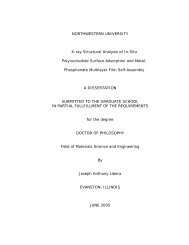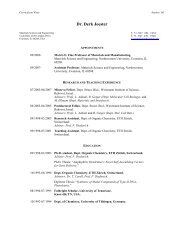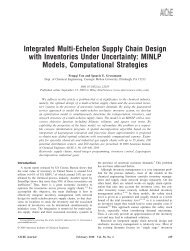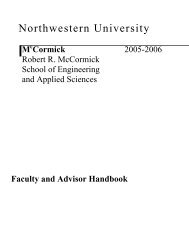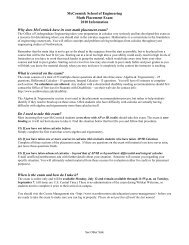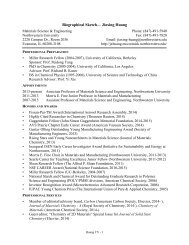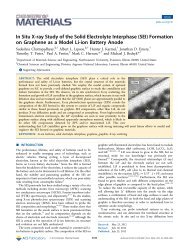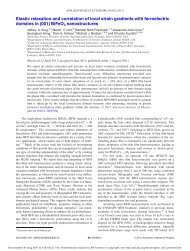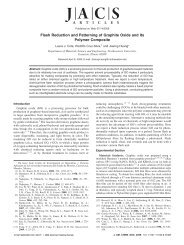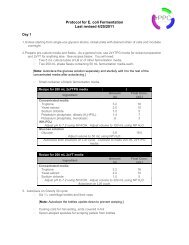Community-Based Operations Research - Humanitarian Logistics
Community-Based Operations Research - Humanitarian Logistics
Community-Based Operations Research - Humanitarian Logistics
Create successful ePaper yourself
Turn your PDF publications into a flip-book with our unique Google optimized e-Paper software.
Johnson and Smilowitz: <strong>Community</strong>-<strong>Based</strong> <strong>Operations</strong> <strong>Research</strong>106 Tutorialsin <strong>Operations</strong><strong>Research</strong>, c○ 2007 INFORMSTable 1.Example community-based OR application: Urban public-school closings.AttributeDescriptionLocalized focusMultiple conflictingobjectivesMultiple stakeholdersRole of disadvantageAccountabilityLack of resourcesUniqueness versusgeneralizeabilityNote. Problem description: Johnson [41].A school-closing policy may differentially affect low-performing schools,and disadvantaged neighborhoods, as compared to schools andneighborhoods overall.Therefore, generic modeling constructs may notcapture the most challenging aspects of urban public-education policy.Efficiency: direct dollar savings in fixed and variable costsEffectiveness: changes in student educational performanceEquity: changes in average school travel times across neighborhoods;changes in levels of racial, ethnic or class segregation across andwithin schools.Donors: local school district, federal government, local foundations.Clients: families whose children attend public schools.Nonclient residents: households without school-age children, or whosechildren attend nonpublic schools.Service provider: local board of education.Racial and ethnic minorities, who tend to be economicallydisadvantaged and segregated, may constitute a majority of studentsenrolled in public schools, although not necessarily a majority of thevoting population, or cadre of professional analysts, funders, or politicalleaders.Cost savings are a direct consequence of school closings; improvededucational outcomes are not.Educational outcomes may even worsenover the short term as the system re-equilibrates.School-closing decisions could be based, in part, on conventionalmeasures such as standardized test scores—or, alternatively, on moresophisticated measures that identify the “value added” by schools.Butspecifying the latter might be controversial and expensive.Local boards of education may have no analysts with experience inOR/MS models and methods, and few hardware or software resourcesto solve the challenging models that arise in developing school-closingstrategies.Too much focus on local attributes shifts emphasis to politics, communityorganizing, and educational administration rather than a more genericmodel that can incorporate issues relevant to many different cities.in four broad categories: human services, community development, public health and safety,and nonprofit management. Human services consist of services to senior citizens, humanitarian(e.g., post-disaster) logistics, public libraries and literacy, public education, and familysupportive services. Family supportive services include e.g., foster care, income-based benefitssuch as food stamps and public assistance, and need-based benefits such as mentalhealth/mental retardation, drug/alcohol treatment, and homeless services.<strong>Community</strong> development consists of housing, community/urban planning, and transportation.In turn, housing can be classified as low- and moderate-income housing, often providedthrough government subsidies, and affordable, mixed-income, and workforce housing, oftenprovided through zoning ordinances or private initiative as well as direct government support.<strong>Community</strong> and urban planning can address conventional economic developmentof distressed or isolated communities as well as pre-disaster planning and post-disasterreconstruction.Public health and safety addresses health care, criminal justice, emergency services, hazardous/undesirablefacility location, and the correlation of chronic diseases and individualdeprivation or social externalities, such as food insecurity or proximity to environmental



